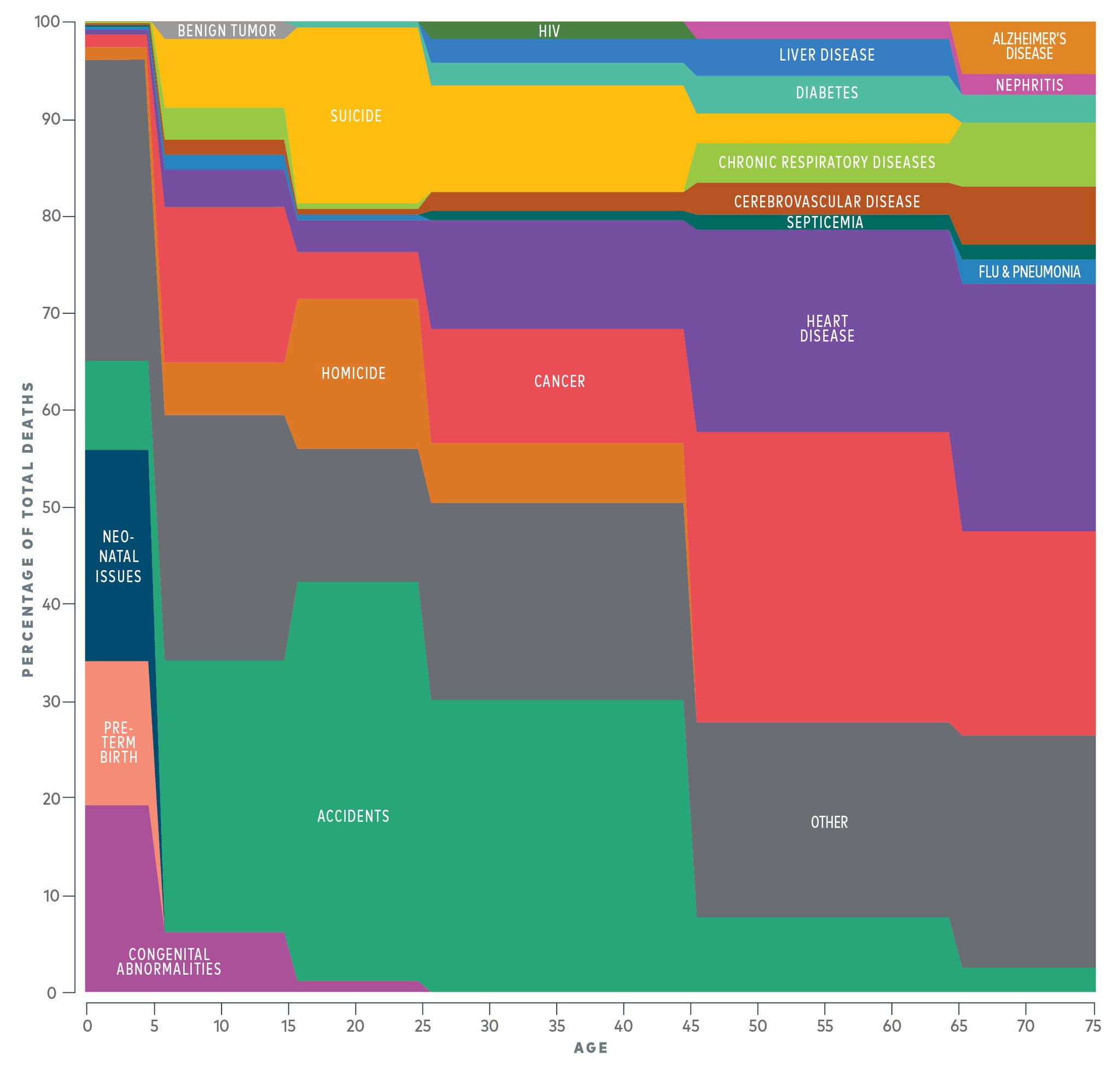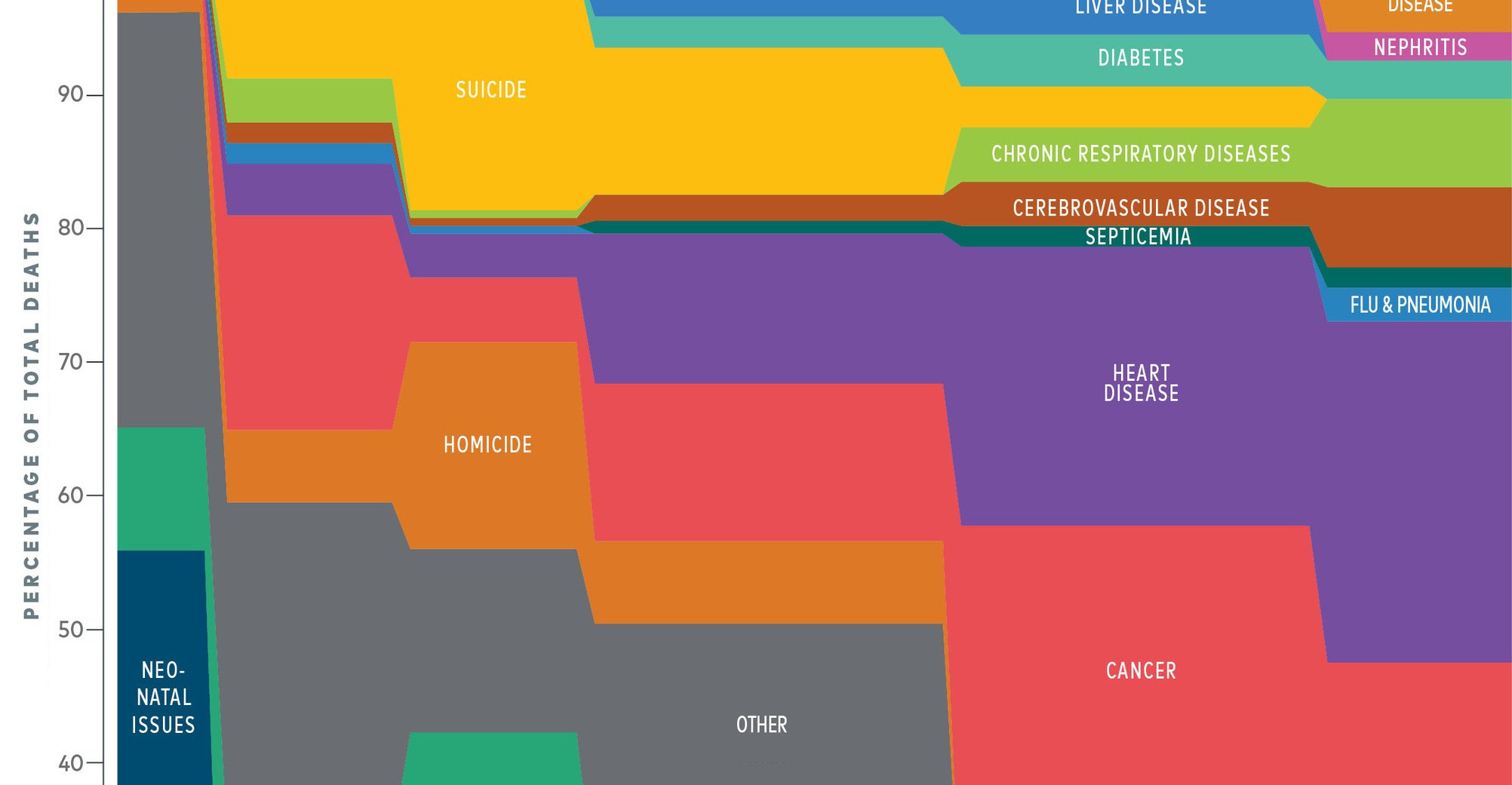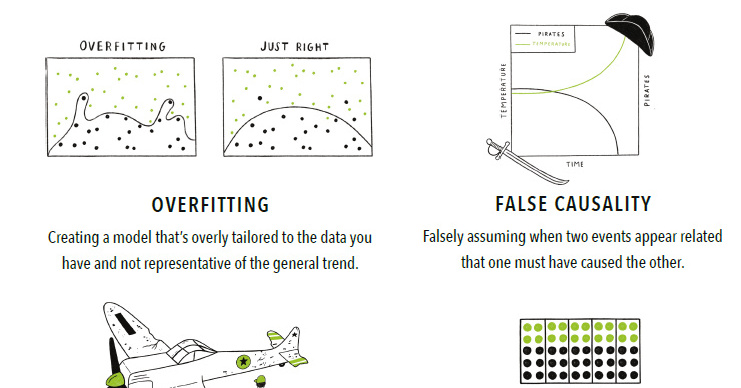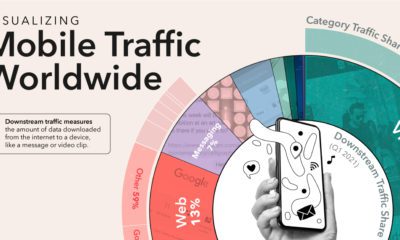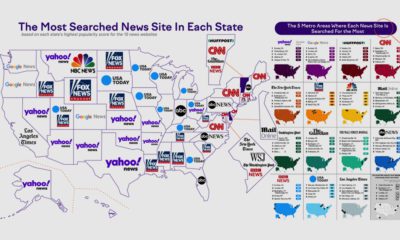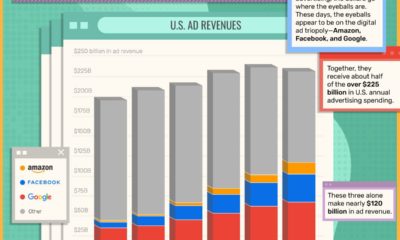And rightfully so, the inevitability of death is a prominent fear for many humans around the world. After all, death is universal, mysterious, immutable, and sometimes sudden – and it can shake up life in ways that no other event can. But is how we perceive death, along with its common portrayal in media, something that is accurate?
Perceptions vs. Reality
Like anything that is shrouded in mystery, death has accumulated its fair share of myths and half-truths that get baked into our stories, perceptions, and societies. Even further, high-profile and tragic events like terrorist attacks, murders, and suicides dominate many aspects of the news cycle. As a result, the causes of death that media outlets are the most fixated on couldn’t be further from actual causes of human death as shown through statistics. The following animation, which comes from Aaron Penne, compares three data sets to show that our worries and media coverage have become quite disproportionate from the actual data. The animation looks at the following:
Which causes do we worry the most about? (Google Search data) Which causes are talked about in the media? (NYT and Guardian headlines) What are actual causes of death in the U.S.? (CDC data)
And as you’ll see, the data is quite different for each source.
We worry about cancer 10x more than we worry about heart disease, but in reality both diseases kill roughly the same amount of people. Meanwhile, the media is fixated on terrorism, homicides, and cancer, but heart disease – which kills more than all put together – receives almost no coverage.
More Data on Death
Actual causes of death are quite different from personal and media perceptions, but this data is not absolute either. After all, how someone may die depends greatly upon other factors like age. Here are causes of human death in the U.S. graphed by age group:
The data shows that accidents are the leading cause of death for most ages up until 45 years old, at which case cancer and heart disease take over. While the topic of death is grim, the above data and statistics can arguably help provide a more realistic outlook regarding one of life’s certainties. It also shows that humans and media are not necessarily rational about this topic, so it’s important to think about it independently if at all possible.
on Even while political regimes across these countries have changed over time, they’ve largely followed a few different types of governance. Today, every country can ultimately be classified into just nine broad forms of government systems. This map by Truman Du uses information from Wikipedia to map the government systems that rule the world today.
Countries By Type of Government
It’s important to note that this map charts government systems according to each country’s legal framework. Many countries have constitutions stating their de jure or legally recognized system of government, but their de facto or realized form of governance may be quite different. Here is a list of the stated government system of UN member states and observers as of January 2023: Let’s take a closer look at some of these systems.
Monarchies
Brought back into the spotlight after the death of Queen Elizabeth II of England in September 2022, this form of government has a single ruler. They carry titles from king and queen to sultan or emperor, and their government systems can be further divided into three modern types: constitutional, semi-constitutional, and absolute. A constitutional monarchy sees the monarch act as head of state within the parameters of a constitution, giving them little to no real power. For example, King Charles III is the head of 15 Commonwealth nations including Canada and Australia. However, each has their own head of government. On the other hand, a semi-constitutional monarchy lets the monarch or ruling royal family retain substantial political powers, as is the case in Jordan and Morocco. However, their monarchs still rule the country according to a democratic constitution and in concert with other institutions. Finally, an absolute monarchy is most like the monarchies of old, where the ruler has full power over governance, with modern examples including Saudi Arabia and Vatican City.
Republics
Unlike monarchies, the people hold the power in a republic government system, directly electing representatives to form government. Again, there are multiple types of modern republic governments: presidential, semi-presidential, and parliamentary. The presidential republic could be considered a direct progression from monarchies. This system has a strong and independent chief executive with extensive powers when it comes to domestic affairs and foreign policy. An example of this is the United States, where the President is both the head of state and the head of government. In a semi-presidential republic, the president is the head of state and has some executive powers that are independent of the legislature. However, the prime minister (or chancellor or equivalent title) is the head of government, responsible to the legislature along with the cabinet. Russia is a classic example of this type of government. The last type of republic system is parliamentary. In this system, the president is a figurehead, while the head of government holds real power and is validated by and accountable to the parliament. This type of system can be seen in Germany, Italy, and India and is akin to constitutional monarchies. It’s also important to point out that some parliamentary republic systems operate slightly differently. For example in South Africa, the president is both the head of state and government, but is elected directly by the legislature. This leaves them (and their ministries) potentially subject to parliamentary confidence.
One-Party State
Many of the systems above involve multiple political parties vying to rule and govern their respective countries. In a one-party state, also called a single-party state or single-party system, only one political party has the right to form government. All other political parties are either outlawed or only allowed limited participation in elections. In this system, a country’s head of state and head of government can be executive or ceremonial but political power is constitutionally linked to a single political movement. China is the most well-known example of this government system, with the General Secretary of the Communist Party of China ruling as the de facto leader since 1989.
Provisional
The final form of government is a provisional government formed as an interim or transitional government. In this system, an emergency governmental body is created to manage political transitions after the collapse of a government, or when a new state is formed. Often these evolve into fully constitutionalized systems, but sometimes they hold power for longer than expected. Some examples of countries that are considered provisional include Libya, Burkina Faso, and Chad.
